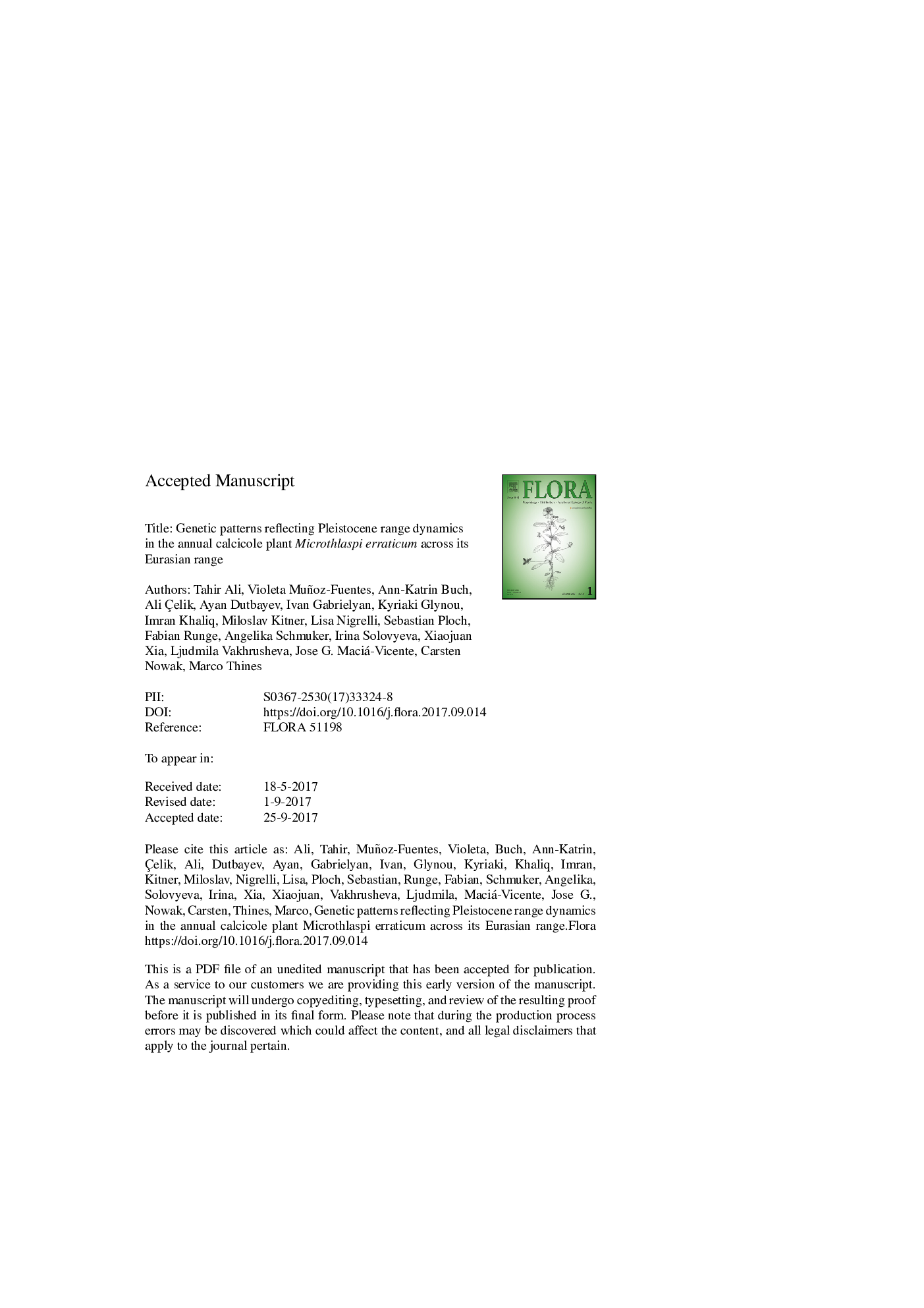| Article ID | Journal | Published Year | Pages | File Type |
|---|---|---|---|---|
| 8470255 | Flora - Morphology, Distribution, Functional Ecology of Plants | 2017 | 36 Pages |
Abstract
The range-wide genetic diversity of Microthlaspi erraticum (Brassicaceae), a Eurasian calcareous annual plant, was investigated with respect to its migration and post-glacial re-colonisation of Central Europe. Both AFLP and sequence data (ITS, matK, trnL-F) were used to analyse 85 populations of the species sampled across its range, including Europe and Anatolia as well as the disjunct populations in Central Asia. A substantial portion of the explainable genetic variation was found to be correlated with climatic heterogeneity. A low level of within-population genetic diversity throughout the range, and a clear genetic differentiation among populations is consistent with the mainly selfing nature and fragmented distribution of the species. The highest within-population genetic diversity was found in Central Europe. However, the number of rare and private fragments was substantially higher in southern Europe and Anatolia, the inferred ancestral range of M. erraticum, whereas populations found in Kazakhstan originated from Anatolia, following a profound population bottleneck. The diversity patterns found in Central Europe and migration models support postglacial re-colonisation from two regions; the south-western Alps and the Balkans. Hence, our results provide molecular evidence for a suture zone in Central Europe, where advancing genotypes from different refugia meet and mix.
Related Topics
Life Sciences
Agricultural and Biological Sciences
Ecology, Evolution, Behavior and Systematics
Authors
Tahir Ali, Violeta Muñoz-Fuentes, Ann-Katrin Buch, Ali Ãelik, Ayan Dutbayev, Ivan Gabrielyan, Kyriaki Glynou, Imran Khaliq, Miloslav Kitner, Lisa Nigrelli, Sebastian Ploch, Fabian Runge, Angelika Schmuker, Irina Solovyeva, Xiaojuan Xia,
